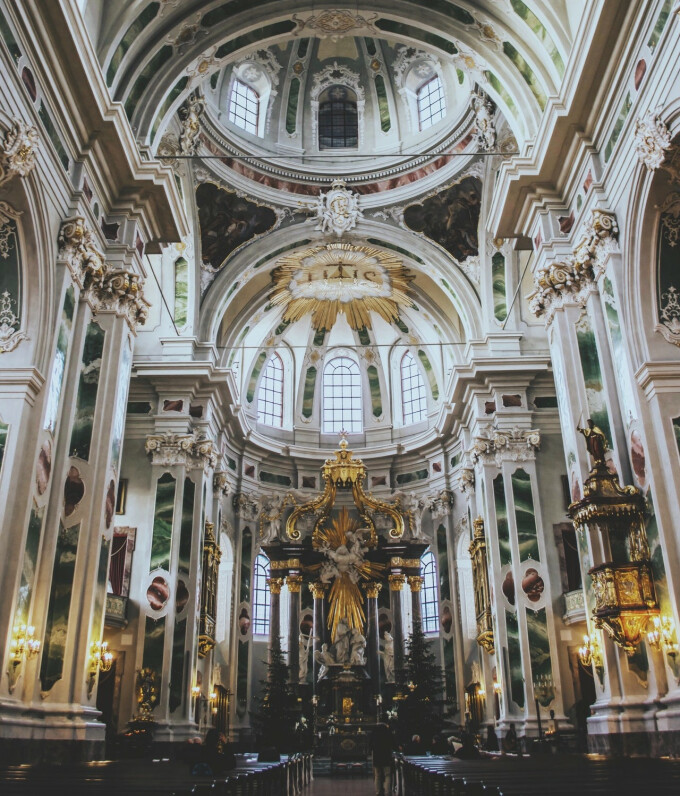Pictures in the Sanctuary

Question: “Why doesn’t Oakwood have any pictures of Jesus in the sanctuary?”
Answer: Bear with me a bit, because I think an answer to this question needs a little historical context. This may not seem like a matter of deep theological importance in this day and age, but there have been many “iconoclastic” controversies in the church since its earliest days. When we hear the word “iconoclast” we think of people or movements that challenge and reject cherished traditions. But the word originally referred to people who removed and/or destroyed religious “icons” including pictures, engravings, or statues in churches because they believed them to be a violation of Scriptural teaching.
One of the most intense iconoclastic periods in church history was during the Protestant Reformation. The Catholic Church had, over the centuries, corrupted the worship of the church by adding unscriptural rituals involving veneration of statues and pictures of Jesus, Mary, the Apostles, and the “saints” of church history. As church reformers such as Martin Luther, John Calvin, and Ulrich Zwingli called the church of Jesus Christ back to Scripture, their teachings swept across Europe and beyond, and church leaders came under conviction and began to remove the statues and pictures from their sanctuaries. In most cases, these removals were done in an orderly fashion, but sometimes violent mobs would go from church to church smashing and burning these images and statues.
The Biblical issue at the root of all of the dispute is the interpretation of the Second Commandment: “You shall not make for yourself a carved image, or any likeness of anything that is in heaven above, or that is on the earth beneath, or that is in the water under the earth. You shall not bow down to them or serve them; for I the Lord your God am a jealous God…” (Deuteronomy 5:8-9). Generally speaking, Christians have understood that the Lord is not prohibiting the creation of just any kind of picture, engraving, or statue – the Lord calls us to be artists after His own image. The commandment is particularly addressing the use of these kinds of images as the focus of or aid to worship. The Westminster Confession of Faith explains the meaning of the commandment in this way: “…the acceptable way of worshipping the true God is instituted by Himself, and so limited by His own revealed will, that He may not be worshipped according to the imaginations and devices of men, or the suggestions of Satan, under any visible representation, or any other way not prescribed in the Holy Scripture.”
It is man’s fallen nature to desire a material, tangible focus for his faith – to represent God with physical objects that can be handled and manipulated. But God has chosen to reveal Himself in worship only by the proclamation of His Word and the sacraments ordained by Jesus Christ, baptism, and the Lord’s Supper. Therefore we must be careful in our worship to avoid any temptations to associate our worship of the Lord with any other images or objects meant to represent Him. For that reason, we do not put any pictures or images of Jesus Christ or representations of the Persons of the Trinity in the sanctuary of the church lest they be used as an aid or focal point for our worship.
